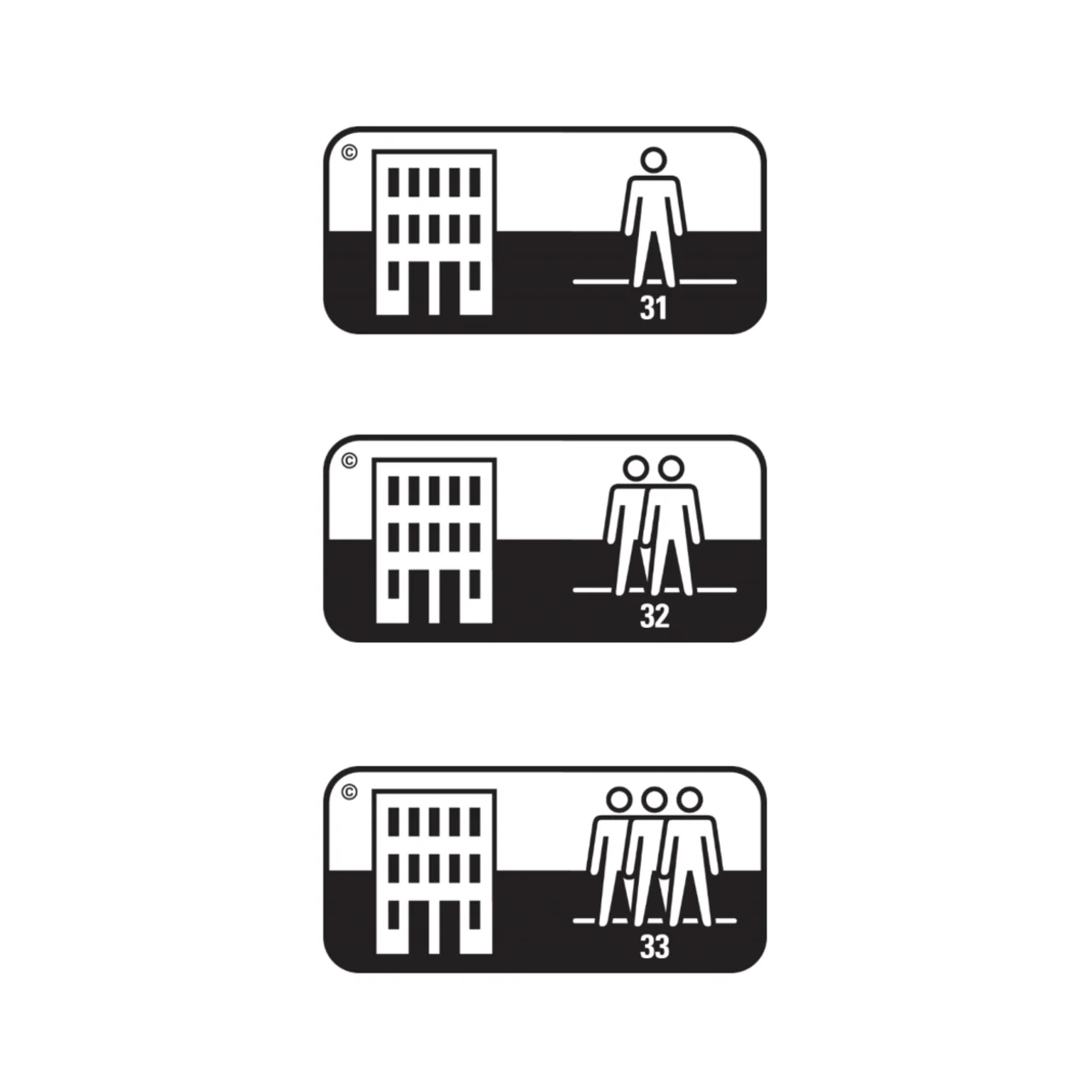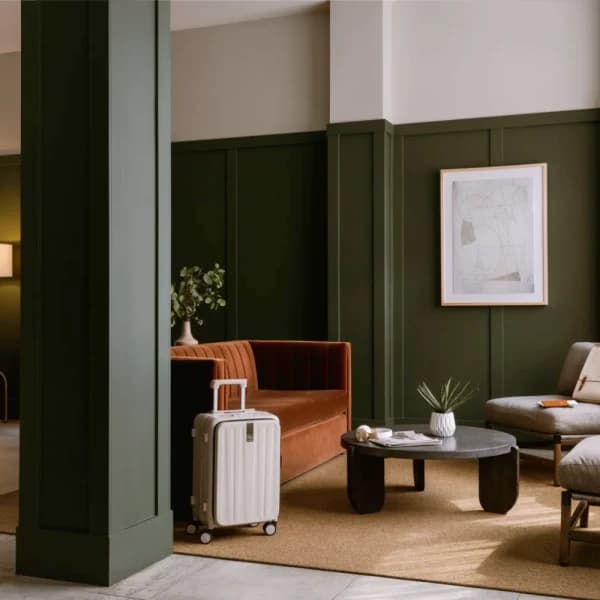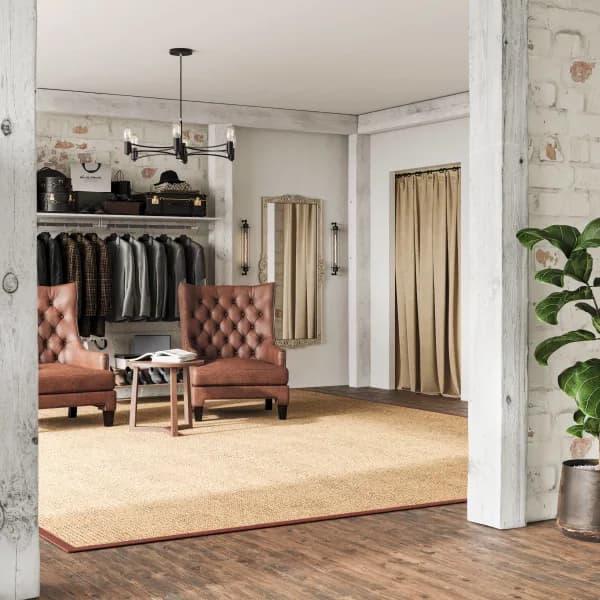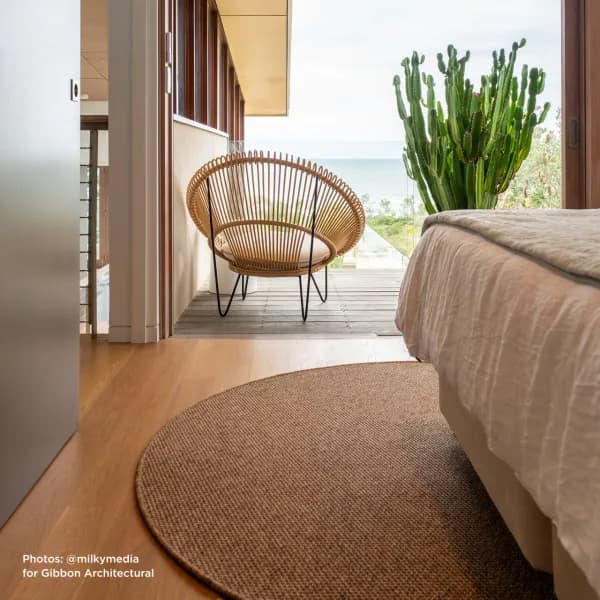Carpet Classifications Guide
Specifying a carpet for a project? This guide offers an overview of the different agencies that create standards and ratings for carpet and what those standards mean.

Carpet Classifications
Carpet is classified based on its ability to withstand different degrees of traffic in its end use application. A carpet in a home may not endure heavy traffic like a hotel and therefore may not need a heavy duty rating. High traffic areas or hospitality settings require commercial carpet, so it is important to know the durability and fire rating of any carpet or rug used in the space.
But how do you make sense of the ratings, especially when there are different systems used by different carpet companies? Some carpets have detailed classifications and specifications, while others are more general. Here is an example of a durability rating that shows both general and specific classifications:
Residential | Medium Commercial | EN 1307 - Class 32
This rating means that the carpet can be used in a residential/domestic setting but is durable enough for a commercial space that experiences moderate public foot traffic.
Below are the most common rating organizations and their classifications for carpet, including fire ratings.
Please Note: not all carpets have all the classification options listed below (and there are many more classifications that we do not list here!).
ISO stands for the International Organization for Standardization. It is an international organization that sets forth a formula or best practice for a process or a product. For carpeting and floor textiles, the most common standard test is ISO 10361. The ISO 10361 is a simulation test that determines what level of foot traffic the carpet can withstand before it’s appearance deteriorates. There are many other ISO tests that rate a carpet’s performance based on castor chair use, slip resistance, or colorfastness, to name a few examples.
EN, from the German name Europäische Norm or “European Norm,” is the European Standard of requirements for products, processes, or services. An EN 1307 classification means that a carpet has been tested and meets EN’s standard for long term appearance retention. Based on the results, a carpet is then classified as suitable for domestic or commercial use. See Durability and Usage below. Another common EN test is EN 13501-1—this test establishes a carpet’s reaction to fire. See Fire Ratings below.
Formerly known as the American Society for Testing and Materials, ASTM International is a leader in establishing technical international standards for materials, products, systems, and services. For carpet, the most common ASTM tests determine a carpet’s reaction to fire. Test examples include the ASTM D-2859 (Flammability), ASTM E-648 (Radiant Panel), and the ASTM E-662 (Smoke Density). ASTM administers other tests as well that rate carpet delamination resistance or average pile weight, for example. Results from the Radiant Panel test classify a carpet as Class 1 (I) or Class 2 (II). See Fire Ratings below.
FCSS stands for Floor Covering Standard Symbols. This organization created standard pictograms or graphics that represent European Standards (EN), making floor classifications and ratings easy to understand. These pictograms are becoming more widely used among European and luxury carpet companies to represent a carpet’s technical specifications. The image at the top of this page shows a few of these pictograms.
Residential or Domestic Durability Ratings
“Residential” or “Domestic” is a general label that means the carpet is appropriate for residential settings. It may have further EN classifications like:
Class 21: for residential areas with light to moderate use
Bedrooms, offices, and other rooms not frequented
Class 22: for residential areas with medium, normal use
Living rooms, family rooms, hallways, dining areas
Class 23: for residential areas with intensive, heavy use; also called Heavy Residential
Any of the rooms or areas listed above that experience intense, heavy foot traffic
Contract Grade Durability Ratings
“Contract Grade” is a general label that means the carpet is appropriate for commercial, public, or hospitality settings. It may have further EN classifications like:
Class 31: for commercial areas with normal use, also called Light Contract or Light Commercial
Retail stores, hotel rooms, churches, meeting or conference rooms, restaurants
Class 32: for commercial areas with medium public traffic, also called Medium Contract or Medium Commercial
Theaters, libraries, institutions, offices, restaurants, nursing or residential facilities,
Class 33: for commercial areas with intensive public traffic, also called Heavy Contract or Heavy Commercial
Lobbies, hotel or office building entrances, department stores, airport or other transportation terminals, service areas, elevators
Reaction to fire test methods from either EN or ASTM can be applied to floor coverings for classification purposes. The ASTM system classifies a carpet as Class 1 or Class 2, while the EN system is more stringent and detailed.
With the EN system, letters A through F indicate how combustible the material is, with A being non-combustible to F being easily flammable. A “fl” abbreviation denotes flooring and the “s” is the level of smoke generation and speed, with s1 being low smoke quantity and speed and s3 being high smoke quantity and speed. Here is an example for a carpet that has earned an EN classification:
Cfl-s1 (EN 13501-1:2018): Cfl refers to a moderately flammable flooring material and the s1 means a low quantity and speed of smoke propagation. The “2018” refers to the test version used to establish the rating.
Fire rating requirements vary by region (please check your local building codes) and are more commonly required in commercial settings where carpet is installed wall-to-wall (fixture). Area rugs, which are an accessory, are generally not required to have stringent fire ratings.
Here are common fire ratings based on location and/or end use:
Fire Ratings for Residential or Domestic Settings
Efl (EN): a normally flammable flooring material but suitable for residential use
Class II fire rating applies to residential wool carpet and rugs since wool is naturally flame retardant
If no rating is listed, the carpet has meet the standard for residential use but not commercial or public applications
Any carpet fire rated for contract settings can be used in a residential setting if desired
Fire Ratings for Contract Grade Settings
Class I (ASTM): the best fire rating that a carpet can achieve; indicates that if the carpet is exposed to fire, the flame spread rate is slow
Required in commercial or hospitality corridors, entrances and exits
Class II (ASTM): the second best fire rating that a carpet can achieve; indicates that if the carpet is exposed to fire, the flame spread rate is still slow, but not as slow as Class I
A class 2 fire rated carpet is still considered appropriate for many contract grade settings
Cfl (EN): a flame retardant flooring material that meets requirements for most commercial or hospitality settings
Cfl-s1 is a commercial standard; it is flame retardant with low smoke production
Castor Chair Suitability
Carpets without a favorable rating for use under castors will become damaged over time. There are different agencies that classify carpets are suitable for use under castors. For example, carpets that have passed the EN 985 test are rated either as suitable for occasional castor chair use or for intensive castor chair use (for a busy office or other business setting).
Stair Suitability
The quality and thickness of the carpet pile and face yarns impact stair safety and durability. Some fibers create a slippery surface on stairs and others deteriorate around the edges of the stairs with heavy traffic. The tests EN 1963 or ISO 12951 establish whether or not a carpet is suitable or not for stairs.
Luxury Class
Sometimes abbreviated “LC,” Luxury Class refers to the carpet’s comfort level and has a range from one to five. The more comfortable, soft, or plush a carpet is, the higher the LC number. On a pictogram, more crowns indicate more luxuriousness. This is part of the EN 1307 classification.
Naturally Beautiful Performance Flooring
With over 30 years of experience and hundreds of successful projects, our business is built to meet the needs of interior designers, architects, procurers, & installers.









